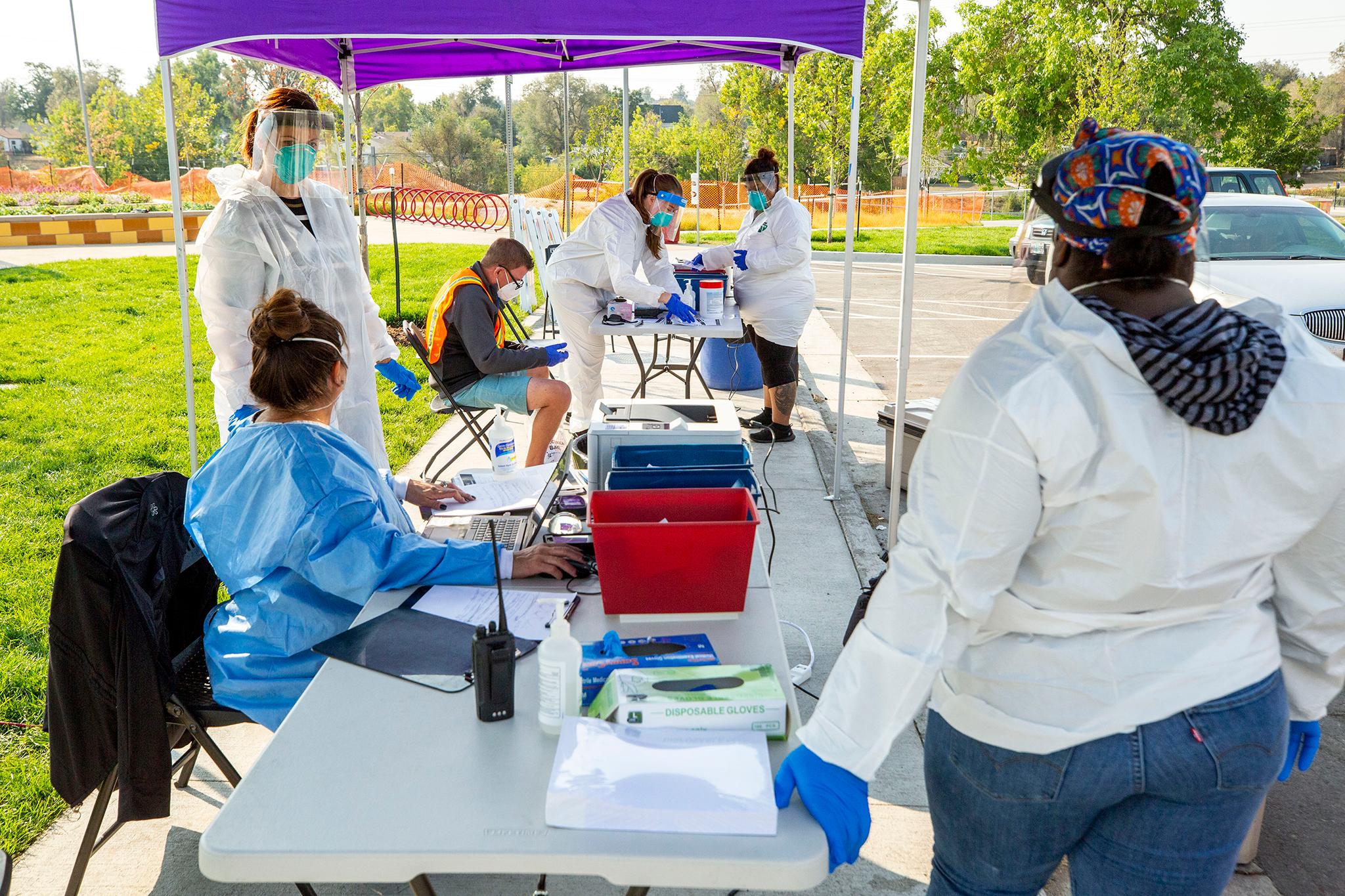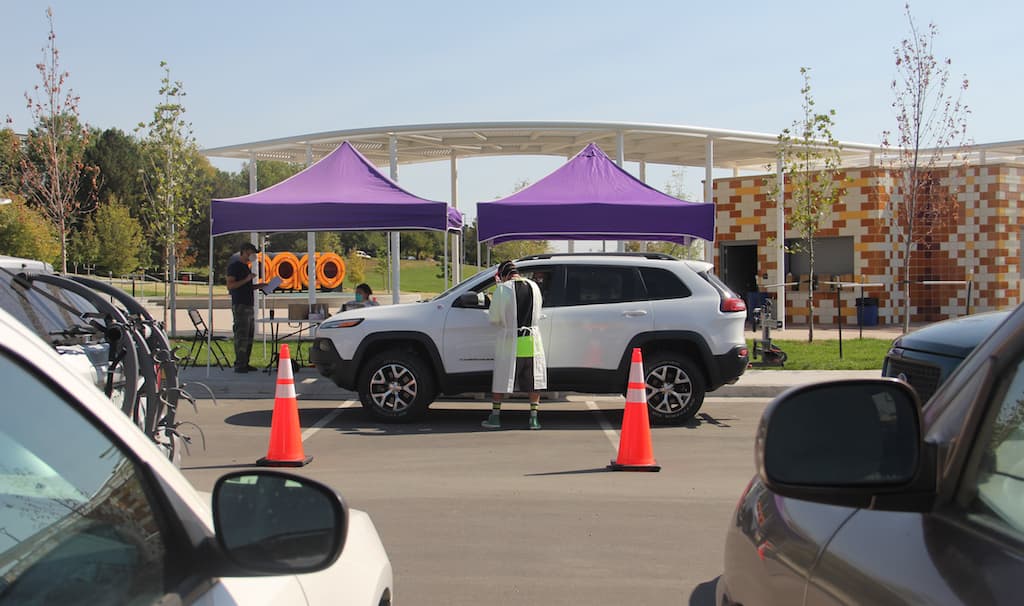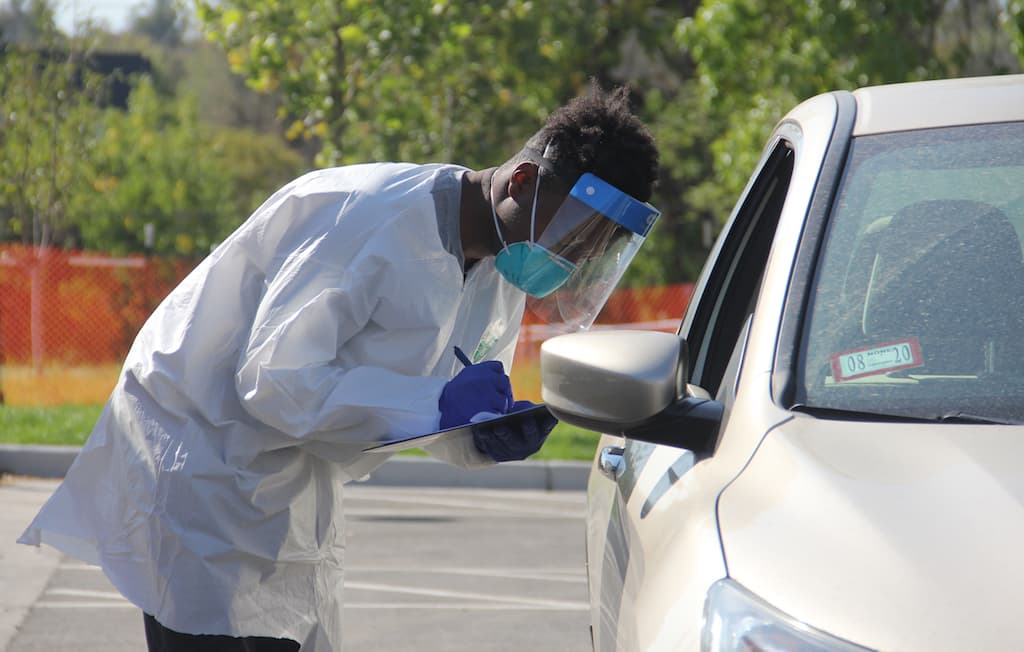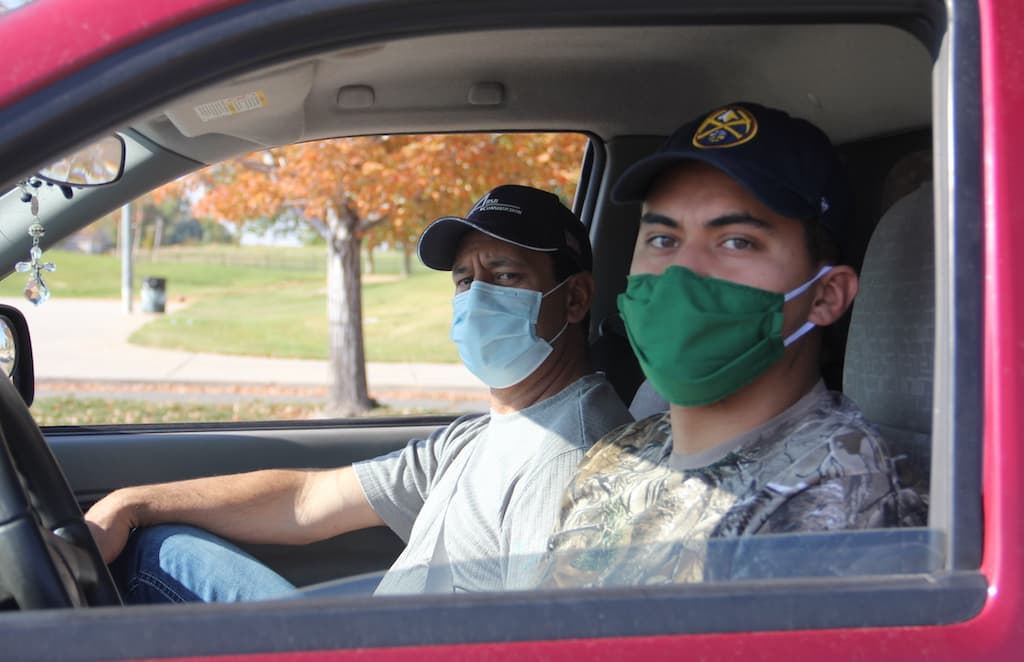Jose Esparza feared the worst when the chest pains started.
Maybe it was a heart attack, he thought. Whatever it was, Esparza, 33, figured it had to be connected to his cousin's positive COVID-19 diagnosis in April, when he was living with her in Green Valley Ranch. His cousin's sister's husband had tested positive after he had done roofing work at a meat processing plant in Fort Morgan. That plant was the site of a coronavirus outbreak that month.
Esparza, who now lives closer to central Denver, said he never got tested for COVID-19, assuming he caught the virus after being in close proximity to his cousin and sharing a drink with her.
A doctor told him over the phone that chest pain was more likely due to inflammation, not heart-related, and that it was a very uncommon symptom of COVID-19. But he felt other symptoms, including fatigue, fever and loss of his sense of smell for a few days -- all COVID-19 symptoms. Other family members ended up getting the virus.
He still isn't sure if he had COVID-19. But the experience reinforced his commitment to making sure he never gets it again or gives it to someone.
"I'm still conscious of it, and I still wear a mask," Esparza said. "I definitely don't want to be a person who passes it on."
Latinx residents in Denver continue to face disproportionately higher rates of COVID-19 than all other racial groups since data from Denver Public Health started showing the discrepancy in the spring. They currently account for 54 percent of all cases and 54 percent of all hospitalizations in the city, though they make up roughly 30 percent of Denver's overall population.
Statewide, Latinx residents made up 36.9 percent of all cases this week, though they comprise 21.7 percent of Colorado's population.

Dr. Sarah Rowan, an infectious disease doctor at Denver Health, has helped oversee the hospital's community testing program, which focuses on lower-income communities and local shelters for people experiencing homelessness. The hospital's testing showed a "pretty big discrepancy" in positivity rates between clients who are Latinx and those who are not Latinx.
"Of the clients we tested who are Hispanic/Latino, it's about an 11 percent positivity (rate)," Rowan said. "Of the white, Black, non-Hispanic (clients), it's about 1 percent. So pretty big difference, pretty dramatic."
Those rates were from testing at community sites in west Denver and in far northeast Denver. Rowan said they've tested in other areas and neighborhoods too, including Five Points and north Denver, but those areas don't have high positivity rates among Latinx residents.
Denver Health has held single-day testing events since May and about 50 community testing sites and testing at shelters and encampments in the city. Among the community testing sties were the Montbello High School campus, Re: Vision in Westwood and Servicios de la Raza.
The hospital is still trying to figure out why Latinx residents are being disproportionately infected and hospitalized. Uninsured rates may hold some clues.
"I do think, that for one thing, it's lack of access to testing," Rowan said. "I think if people are uninsured, they're less likely to access the test."
Data compiled by the Colorado Health Institute for Denverite shows Latinx residents are twice as likely as white residents to be uninsured. Statewide, 10.3 percent of Latinx residents are uninsured, compared to 5.6 percent of white residents and 5.3 percent of other non-Latinx residents. About 10.5 percent of Latinx residents in Denver are uninsured.
Westwood resident Gabriela Medina works with Esparza at his company, BuCu West, a neighborhood development association. Medina's husband and their two children tested positive for COVID-19 last month, while she tested negative at a free clinic in Montbello.

Medina, who works in community outreach, is uninsured. Both of her children are on Medicaid. She learned about the free testing through a community group.
She has some ideas about why Latinx residents in the city are struggling with coronavirus.
"There are a lot of factors," Medina, who's originally from Mexico City, said in Spanish. "The number one factor for immigrant communities is it's sometimes hard to access to health care services. And sometimes, we don't always know where to go."
Several of the community testing sites in Denver are in areas that have been traditionally undeserved -- and disproportionally impacted by COVID-19.
The city has shifted its focus from large-scale testing at the Pepsi Center to meeting people where they live. It's one way the city hopes to address racial and ethnic discrepancies in positivity rates.
They included places like Montbello in far northeast Denver, where David Tovar and his father, Roberto, got tested at a drive-up site on Tuesday.
The two live in Green Valley Ranch. They decided to get tested as a precaution after being potentially exposed to someone who said they felt sick.
"We still don't know whether or not they have been infected," David Tovar said in Spanish.
Cali Zimmerman, emergency management coordinator for the city's public health department, said similar testing sites cover neighborhoods like Elyria-Swansea, Green Valley Ranch, Globeville and a location in southwest Denver.
Zimmerman said the department worked with the city's parks and recreation department and council members in the area to land on Paco Sanchez Park in West Colfax as a testing site.

"We look at the inverted L, as folks know," Zimmerman said. "And then based on that, and then just anecdotal ... information, we're able to pick our spots."
The drive-up testing site at Paco Sanchez will conduct about 200 tests a day, with limited hours on weekends. The times may be adjusted depending on demand. Zimmerman said city staffers knocked on nearby residents' doors to let them know about the testing site before it opened.
Councilwoman Jamie Torres represents parts of west Denver, including neighborhoods with some of the highest case rates in the city, like Westwood. The community site at Paco Sanchez Park is in her district.
Torres said the city told her the Pepsi Center's drive-up only format presented a barrier for people in her district.
"They didn't see a whole lot of traffic from this side of town," Torres said about the Pepsi Center. "This standing up, but then weekend sites at Re: Vision, possibly a permanent site at Re: Vision, and Denver Indian Center, as locations where they've got some pretty regular traffic ... it's made a difference already."
Places around the U.S. have taken different approaches to addressing the racial and ethnic disparity in infection rates. California, for example, requires its largest counties to reduce rates among its vulnerable communities before they can begin certain reopening efforts.
On a recent sunny day, Lakewood resident Denise Roque waited in her car to get tested in Montbello.
She took work off last week after feeling cold-like symptoms, which are not necessarily similar to symptoms of the novel coronavirus. Roque said her grandmother got COVID-19 while living in a nursing home.
"It was pretty worrisome," Roque said. "It was when it was still a new thing.

Lupe, who asked that we use her first name only, got her test after walking up to the testing site in Montbello.
Her eyes started watering as she talked about her situation. A Commerce City resident who works in a hotel in Denver, Lupe told her boss she wasn't feeling well earlier this week, so her boss told her to get a coronavirus test. She's originally from Mexico City.
Lupe doesn't have insurance and wasn't sure where to get tested. She ended up at a testing site in Denver, where she was frustrated to find the staff didn't speak Spanish (city staff confirmed to Denverite that there was no translator at the site at the time), though she speaks enough English to get by, she said.
Getting the test and waiting three days for a result meant she would be missing work. And missing work meant missing out on money, which meant possibly falling behind on rent again. She wasn't sure whether she would go back to work while she waited for her results.
She used to work in food prep, but since the pandemic started, her work now includes cooking, dish-washing and picking up hotel guests at the airport.
"Now, with the coronavirus, we came back and have to do a bit of everything," Lupe said in Spanish. "What worries me is when I take people to the airport. Because I have to pick people up from the airport, and I have no idea where they're coming from, and there are people who don't want to put on a face mask."
You can get a COVID-19 test at different sites around the city regardless of whether you have insurance or if you are a legal resident of the U.S. Visit this website for more information and to register for a test. Find more information about mobile testing here.
This article has been update to correct Esparza's spelling.













